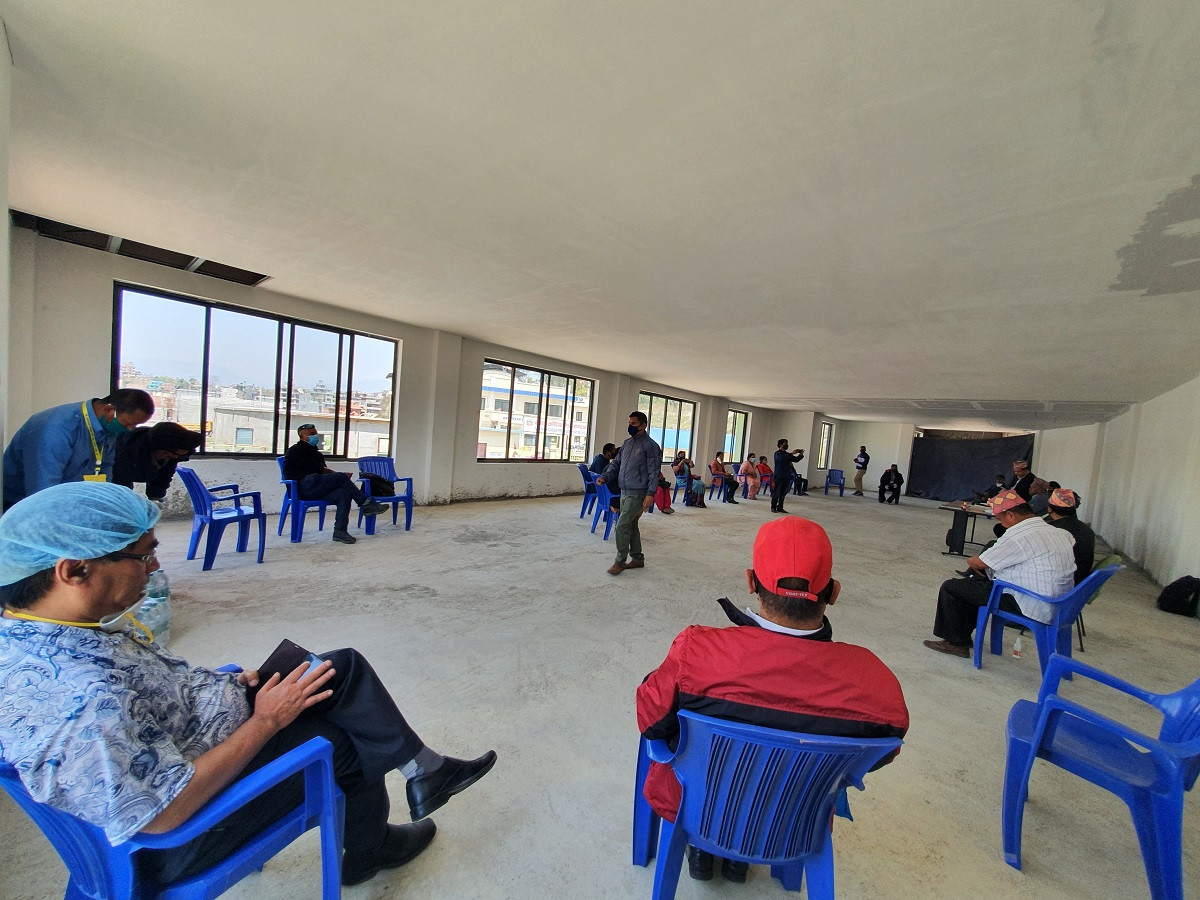Friday, May 1. It had been raining all morning—quite unusual for this time of the year.
Besides the persistent rain, something unusual was unfolding in MadhyapurThimi, an old town 10 kilometers east of Kathmandu city center.
After crisscrossing the town, six ambulances with flashing lights and blaring sirens screeched to a stop one after another to the main entrance of Nepal Korea Friendship Municipality Hospital.
Residents in the vicinity, observing the lockdown restrictions in the homes, started to peek through their windows.
The emergency crews wheeled 17 people to the hospital’s triage station purpose-built for COVID-19 patients.
The municipality hospital had been preparing for this ‘dreadful’ situation for a while. Soon, all the components of the hospital sprang into action and directed the incoming patients in their newly set-up isolation and intensive care (ICU) facilities.
Patients, showing mild to severe COVID-19 symptoms, were taken to the hospital’s special counselling and sample collection section. And medics took their throat and nasal swab samples.
The hospital had recently built a new molecular facility for COVID-19 detection. All in all, these incoming COVID-19 cases were well taken care of as per the COVID-19 preparedness protocol that the hospital had put together. Fortunately, this was only a preparedness drill.
Under the leadership of the mayor’s office, the hospital conducted the drill in collaboration with the Nepal Red Cross Society and the Center for Molecular Dynamics Nepal.
The hospital and the municipality were able to identify some important gaps, and lessons learned from the exercise which were incorporated into a polished plan for COVID-19 preparedness.
(The author is One Health expert and Executive Director of the Center for Molecular Dynamics Nepal. He has been conducting emerging disease research in Nepal for the past 10 years, and heads biotechnology and vaccine development companies in Nepal)

